‘We are living a wonderful moment.’ Humble Osasuna enjoys surprising success
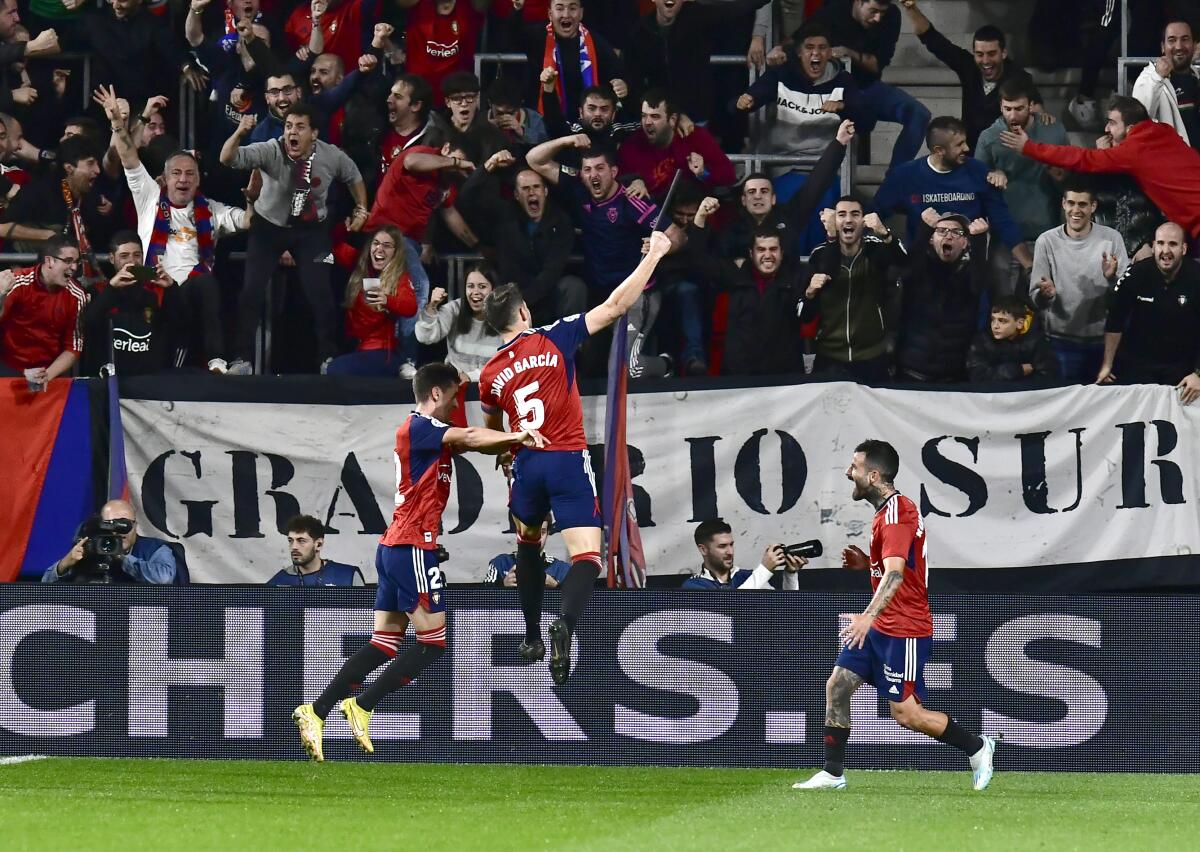
- Share via
Hello and welcome to the weekly L.A. Times soccer newsletter. I’m Kevin Baxter, the Times’ soccer writer, and today we’ll explore Julián Araujo’s search for a place to play and why the Super League might not be so super after all, and introduce Mexico’s new national team coach.
But we start in Spain where Osasuna, a century-old club that’s never won a top-tier national trophy, is taking aim at its first after reaching the semifinals of the Copa del Rey.
“We are living a wonderful moment,” Fran Canal, the team’s general manager, wrote in an email interview.
In Spain, wonderful is relative, however. Superclubs Barcelona and Real Madrid, the two richest soccer teams in the world, have combined to win 61 league titles — and one or the other of the two clubs has finished second 51 times. Not surprisingly, the teams are 1-2 in the standings again this season.
As a result, most La Liga teams have learned to measure success in ways other than league championships. For Osasuna, that starts with avoiding relegation.
“Every stay in La Liga is a triumph for us,” sporting director Braulio Vázquez said of the team, which has spent 19 of the last 23 seasons in the first division. “Obviously it is very difficult to compete against clubs with such great economic potential.
“However, we are ambitious and do not put limits on our dreams. Once our place is assured, we can opt for other challenges.”
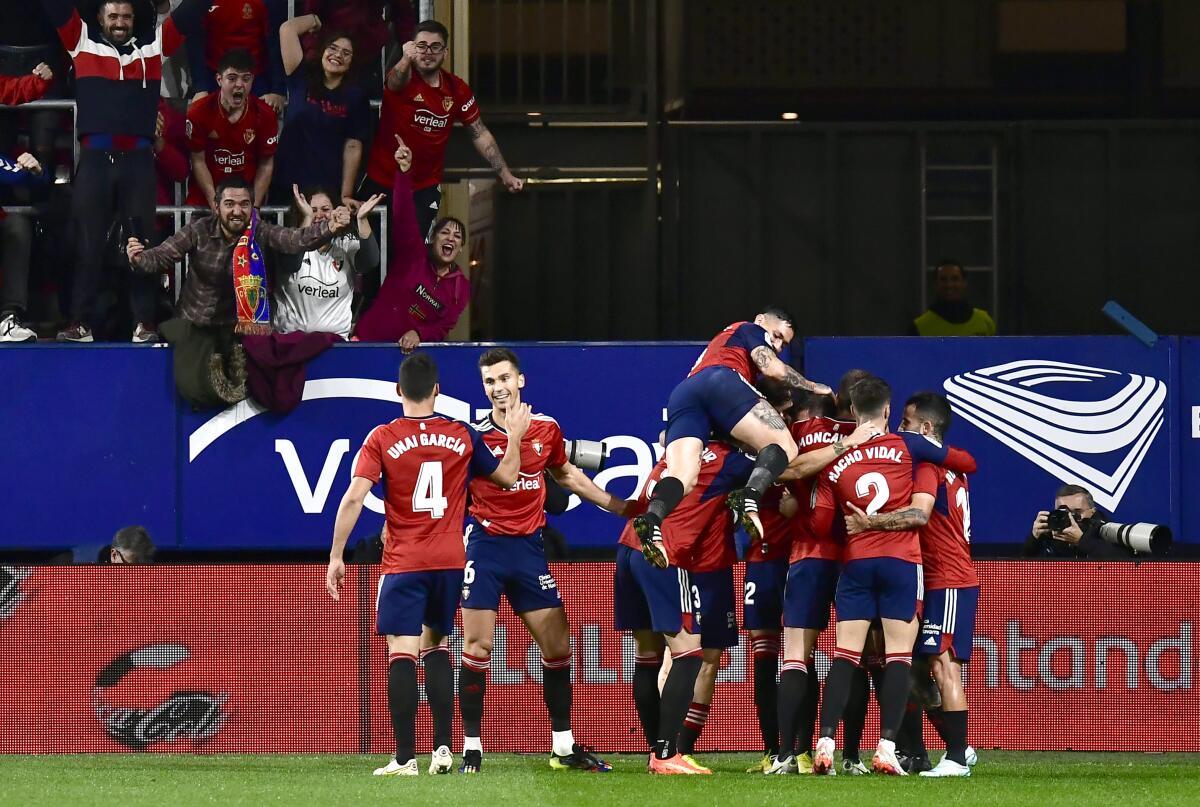
Like the Copa del Rey, Spain’s prestigious domestic cup competition. Osasuna heads into its two-leg semifinal with Athletic Bilbao next month unbeaten, having eliminated Sevilla and Gimnàstic in extra time and Real Betis on penalty kicks in its last three elimination games. If it gets past Bilbao, it would play in the final for just the second time; in 2005 it lost to Real Betis in extra time.
Francisco “Patxi” Puñal played in that game, one of a club-record 513 appearances in all competitions. A season later he led Osasuna into the UEFA Cup, forerunner to the Europa League, and the season after that the team played in the UEFA Cup semifinals and Champions League qualifying while finishing fourth in La Liga.
It was the best season in club history.
After Sunday’s scoreless road draw with Valladolid, which left the team with just one loss in nine games in all competitions this year, Osasuna (8-7-6) is ninth in the league table. If it stays there, it would be the team’s highest finish in more than a decade. The team also is just four points out of its first European tournament berth in 16 years.
But Puñal, 47, now director of the club’s academy, is reluctant to call this the start of another golden generation in Pamplona.
“We must not lose sight of the fact that we are a humble club. Let’s not lose sight of the fact that what we’re doing is exceptional,” he said. “We have to be aware that there will be a time when we will be there again, flirting with relegation.
“If we manage to finish the season fight[ing] for a UEFA place,” he continued, “then it is a big and resounding success.”
Puñal’s job is assuring that success continues. To prevent teams from spending themselves into bankruptcy, La Liga has adopted a unique salary-cap system in which teams’ spending is limited by the amount of revenue they generate. This season Osasuna can spend just $56 million on its payroll; Barcelona and Real Madrid can spend more than 12 times that much.
To make up that difference, Osasuna must depend on its academy system, not only to produce talent for the first team but also to produce revenue by developing players to sell on the transfer market.
Osasuna’s youth academy or “quarry,” known as Tajonar much as Barcelona’s is called La Masia, is a source of tremendous pride for the team and its supporters. It is focused primarily on recruiting players from the team’s home of Navarre, a province of about 661,000 in northern Spain that borders the Basque autonomous region and southern France and once was the center of a powerful medieval kingdom. Academy alumni include World Cup veterans and Navarre natives César Azpilicueta and Javi Martínez.
“Our quarry is made unique by our people,” Puñal said. “The philosophy, the idiosyncrasy of our club, the need to have a large nucleus of home players in our first team, makes us work with more care with the quarry. We know that there are many clubs with which we cannot compete economically. However, we are clear that we can compete and be the best in training.”
What Osasuna rarely does compete for is international transfers. Twenty of the club’s top 24 first-team players this season are Spanish, and half of those came through the team’s player-development system at Tajonar.
“We are maximizing the work with the quarry, which for us is fundamental,” Canal said. “But we do not want academy players to [sell] business, but to make up the basis of our team. Osasuna cannot be understood without a nucleus of players training in Tajonar.”
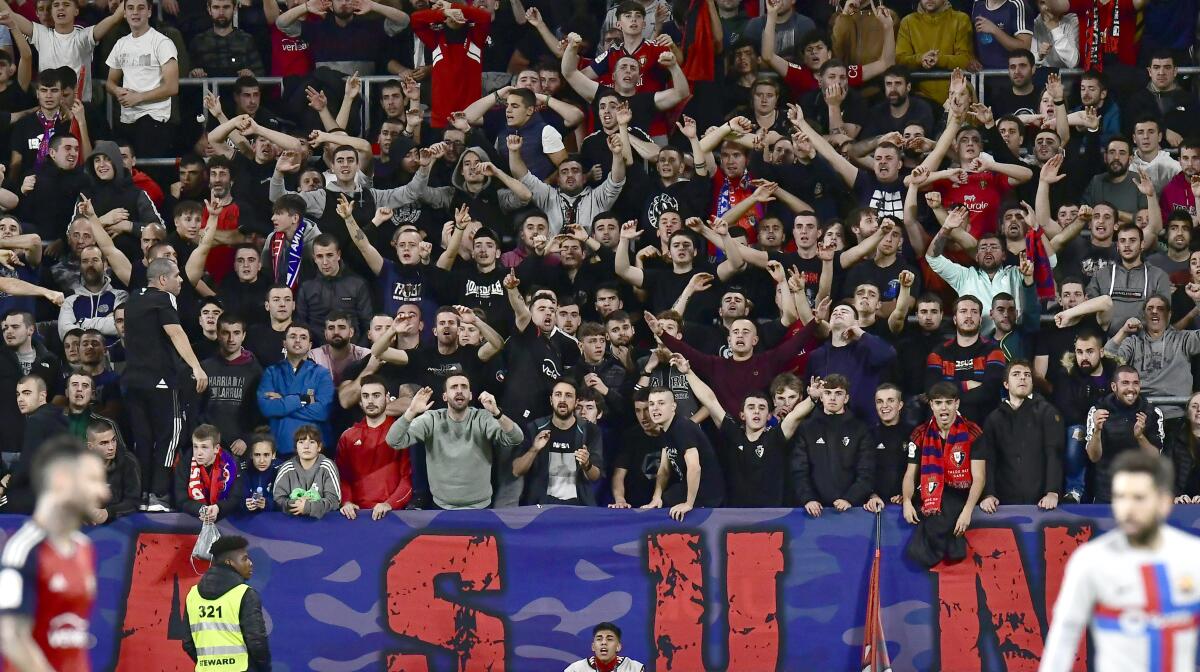
The club is unique in other ways too. It is just one of four teams in La Liga without a majority owner. Instead, like league-leading Barcelona, it is owned by its members, who elect a president to handle day-to-day affairs.
“We are proud to be a different club. Our idiosyncrasy is one of our main strengths,” Canal said. “The fact that Osasuna belongs to all its members enhances the feeling of belonging, the rootedness of this club. Among the disadvantages, not being a limited public company we do not have the ability to carry out a capital increase if we want to increase investment in signings, for example.
“Having the same opportunities as Real Madrid or Barcelona,” he added, “is a utopia. What we have to do is improve every day at all levels in internationalization, digitalization, communication, brand, business and technology.”
The improvement on the field already is well underway and Osasuna soon may have a Cup to show for that. Whether it’s also the start of another golden generation in Pamplona, only time will tell.
Enjoying this newsletter? Consider subscribing to the Los Angeles Times
Your support helps us deliver the news that matters most. Become a subscriber.
Araujo saga: He can fly to Spain, but he can’t play
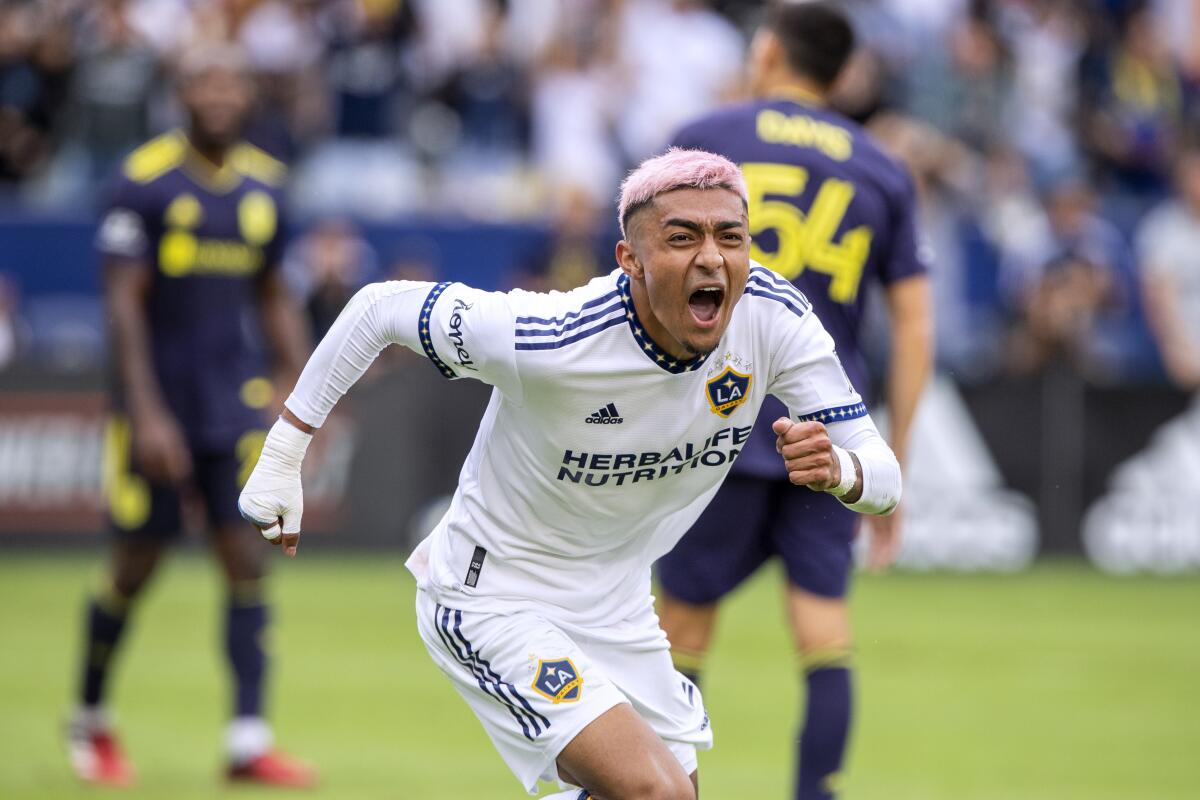
Is Julián Araujo a Barcelona player or not? Apparently that depends on your definition of the word “player.” The Galaxy say their two-time MLS All-Star outside back now is property of Barcelona, but FIFA has ruled he can’t suit up for the team.
Araujo was headed to Spain on a transfer after the Galaxy and the La Liga club agreed to a complicated deal reportedly worth just more than $4 million. Problem is, the necessary paperwork to register the player wasn’t filed until 18 seconds after La Liga’s transfer window closed last month, so FIFA refused to approve the move.
That means the transfer is good, which makes Araujo a Barcelona player. It’s the registration that was late, meaning he can’t play.
Barcelona took the blame for the tardiness, which it blamed on a computer error, and appealed the ruling, first to FIFA and then to Court of Arbitration for Sport, which has yet to rule on the matter. However Mateu Alemany, Barcelona’s director of football, already was looking toward the summer when he spoke of Araujo — originally in the past tense — at a news conference last week.
“We wanted him for the second team,” he began. “We want him and we’ll look for a solution, via the Court of Arbitration for Sport or he can play in another team for five months and then join us.”
Apparently that other team won’t be the Galaxy, as reported by ESPN’s Jeff Carlisle, who did an excellent deep dive last week on the Araujo ordeal.
“The transfer of Julián to Barcelona went through. That was all executed upon,” coach Greg Vanney said. “The transfer wasn’t contingent upon registration or anything like that. So he’s their player.”
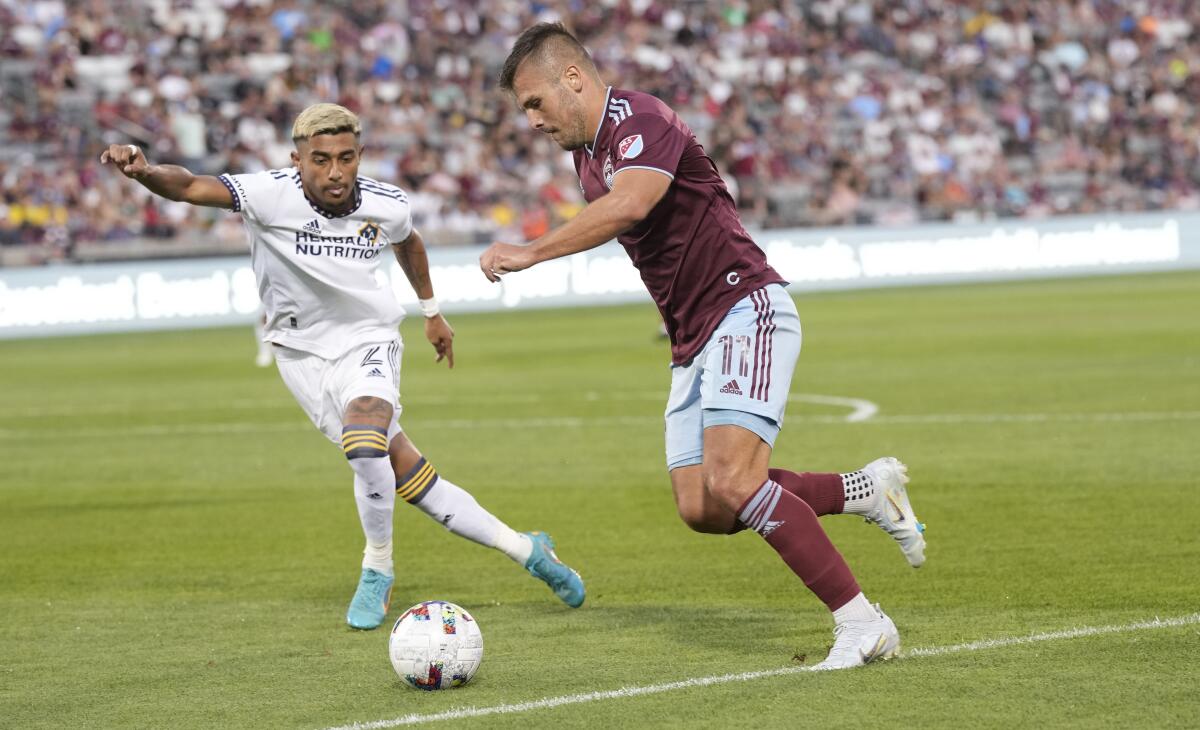
And bringing him back to the Galaxy, even for five months, would be difficult given MLS roster rules.
As Carlisle explained, when former Galaxy general manager Dennis te Kloese signed Araujo to a contract extension in the summer of 2021, it was through the U22 initiative, which allowed the team to take a reduced hit on the league-mandated salary budget. With Araujo’s departure, Vanney said the Galaxy want to replace him using the same U22 mechanism.
Complicating things further is the ban that will prevent the Galaxy from adding players on transfer this summer, part of a series of sanctions levied against the Galaxy for violating MLS salary rules when Te Kloese signed forward Cristian Pavón in 2019. The Galaxy still can sign players on transfer in the primary window, which closes in April, but the longer Araujo’s situation remains uncertain, the less time Vanney has to find a replacement.
There’s nothing preventing Araujo, 21, from simply leaving for Barcelona and training there while he adjusts to his new surroundings. He also could be loaned out, although he would have to go to a league that still has a transfer window open. That precludes most of the top leagues in Europe but not MLS.
Could Araujo actually end up playing against the Galaxy — who technically still have his MLS rights yet don’t want him back — while on a short-term loan from Barcelona? Probably not. But given everything that’s happened so far, can it really be ruled out?
Is the latest Super League proposal really super?

When a dozen clubs from top leagues in Spain, Italy and England announced a plan to create a 20-team super league in April 2021, it collapsed in less than 48 hours amid fierce opposition from fans, lawmakers, club owners and UEFA, the governing body of football in Europe, which was to have no jurisdiction over the new competition.
But if the idea of an elite European Super League independent of UEFA briefly faded away, it never was completely forgotten and returned last Thursday in a proposal for a breakaway tournament featuring as many as 80 teams. Spanish-based A22 Sports Management, the organizer behind the idea, said it has talked to approximately 50 European teams and found interest, although the proposal still faces significant headwinds.
“The foundations of European football are in danger of collapsing,” A22 chief executive Bernd Reichart told German newspaper Die Welt. “It’s time for a change.”
Barcelona president Joan Laporta, however, would say only that negotiations regarding a Super League were “progressing.”
“We don’t want our dialogue with UEFA to break down,” he said. “I believe we need to establish a deeper debate with the national leagues to find a solution shared by all so the new Super League can coexist with the national leagues, just like now the national leagues coexist with the Champions League.”
For financial reasons the idea of a breakaway competition probably would find the most support in Spain, Italy and France, where teams are having trouble matching the monetary might of English Premier League clubs. In the just-completed winter transfer window alone, EPL clubs spent nearly $1 billion on players, 57% of the total of all transfer spending in January and nearly four times the total spent by clubs in Europe’s other top four leagues combined.
France’s Ligue 1 was a distant second last month in investing $132 million in transfers while spending in Spain’s La Liga and Italy’s Serie A fell to about $31 million each. One English club, Chelsea, spent more than twice as much as the 40 Spanish and Italian clubs combined on just one player, Benfica midfielder Enzo Fernández.
The Super League, which would be open to teams in all 27 EU member states, would provide an opportunity to earn additional revenue, which is appealing given the current financial imbalance between English teams and those on the European continent.
“The British market is doped,” La Liga president Javier Tebas told the Associated Press. “It is quite dangerous that the markets are doped, inflated, as has been happening in recent years in Europe, because that can jeopardize the sustainability of European football.”
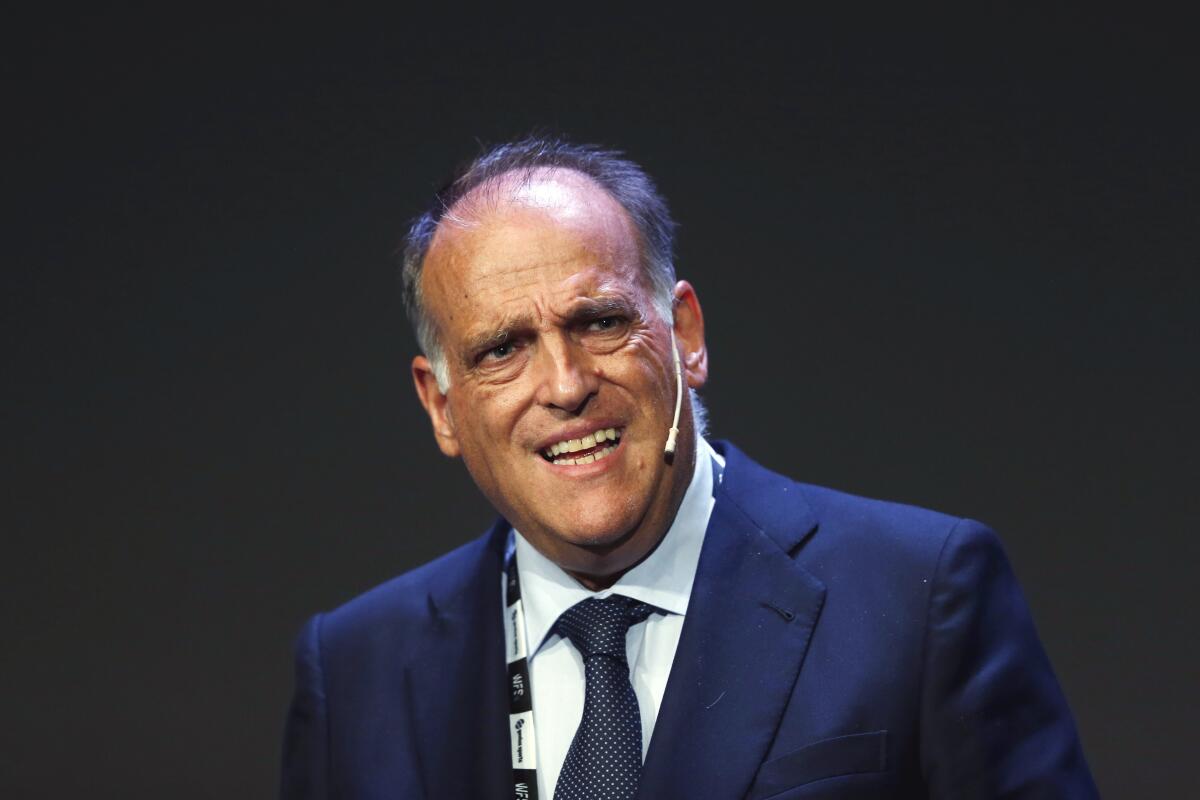
Which isn’t to say Tebas has embraced the Super League, an idea which appears to have landed with a thud yet again.
“The Super League is the wolf disguised as grandma in an effort to try to fool European soccer. But its nose and its teeth are very big,” he tweeted last week.
The proposed Super League, which would begin with 60 to 80 teams playing in multiple divisions, necessarily would compete with UEFA’s more established Champions League for attention, prestige and sponsors. And Tebas isn’t the only one in opposition. The European Leagues organization, which represents the organizers of 40 domestic competitions in 34 countries, said it never met with A22 and was not consulted about the idea of a new Super League — and wouldn’t support it if asked.
“The Leagues fully support the current European club football model,” it said in a statement. “This model is far from being broke and does not need to be fixed.”
The idea met with firmer opposition in England, where the Football Supporters’ Assn. called it “a walking corpse.”
“An open competition for Europe’s top clubs already exists — it’s called the Champions League,” the group said.
The European Club Association [ECA], led by Paris Saint-Germain owner Nasser Al-Khelaifi, also turned thumbs down while calling A22’s proposal “another deliberately distorted and misleading attempt to de-stabilize the constructive work currently taking place between football’s real stakeholders to move things forward in the overall best interests of the European club game.”
“As the sole organization recognized by FIFA and UEFA representing clubs at European and international level, and the only body through which clubs have genuine representation in their decision-making, ECA reiterates its long-standing opposition to the European Super League and any breakaway project,” it added.
The idea is battling legal opposition as well. Last December, when A22 argued before the European Court of Justice that UEFA exercised monopoly control over European soccer, advocate general Athanasios Rantos proposed the court recognize UEFA’s authority.
An official ruling from the court is expected before the end of the season in May.
Mexico gets a new boss

The U.S. and Mexico, CONCACAF’s traditional soccer powers, came home from last fall’s World Cup in Qatar unsure who would coach their teams at the start of the new World Cup cycle. The U.S. still hasn’t answered that question, but Mexico did Friday when it introduced Diego Cocca, most recently the manager for Liga MX club Tigres, as the national team’s new leader.
Cocca, 50, replaces Tata Martino, whose four-year contract expired when Mexico was eliminated in the group stage in Qatar, El Tri’s earliest World Cup departure since 1978.
Cocca clearly is the flavor of the moment in Mexico.
In the summer of 2020, he took over an Atlas team that hadn’t won a Mexican first-division title in 69 years and led it to back-to-back titles. That led to a big promotion when he briefly replaced Miguel Herrera, a former national team coach, with Tigres in Monterrey. But he coached just five games there before El Tri called.
“I believe a lot in Mexican soccer players and their talent,” Cocca, who like Martino is an Argentine, said during his introductory news conference. “But talent is not enough. You have to give them a whole lot of tools so they can take off, and that is my goal. I want to make them take off.”
Cocca, who also played or coached in Argentina and Colombia, has spent much of his professional career in Mexico playing for Atlas, Veracruz and Querétaro and coaching with Atlas, Santos and Tijuana in addition to Tigres.
Martino, who replaced Colombian Juan Carlos Osorio after the 2018 World Cup, got off to a hot start with Mexico by going unbeaten in his first 11 games and winning the CONCACAF Gold Cup. But the team struggled the last two years, losing to the U.S. three times in 2021 alone and falling in the Gold Cup and Nations League finals and in a World Cup qualifier.
Mexico had the second-oldest team in the 2018 World Cup in Russia and Martino did little to rejuvenate the roster during his four years in charge. As a result, Mexico had the second-oldest team in Qatar as well and showed its age in going 227 minutes without a goal.
Martino won just five of his last 14 games as coach and finished 42-12-12 overall.
Mexico will be joining the U.S. and Canada in hosting the 2026 World Cup, with 10 games to be played in Mexico City, Guadalajara and Monterrey.
And finally there’s this …
U.S. World Cup star Christian Pulisic will be leaving Chelsea this summer despite having a year left on his contract, according to reports. Since Dodgers co-owner Todd Boehly spearheaded a takeover of the Premier League club last spring, Chelsea has brought in 18 new players in the last two transfer windows. To make room, Pulisic will lead an exodus out of Stamford Bridge in the coming offseason with Hakim Ziyech, Callum Hudson-Odoi, Kalidou Koulibaly, Romelu Lukaku and Mateo Kovacic among those who could follow.
Quotebook
“This is not over. We will continue to fight for everything we deserve and we will win. The SheBelieves is being played in protest.”
Christine Sinclair, international soccer’s all-time leading scorer, announcing members of Canadian women’s team will play Thursday’s SheBelieves Cup game against the U.S. after saying the team would boycott the tournament. The country’s national federation threatened to sue the team for millions in damages if the players went ahead with their threat to strike over funding cuts to the program.
Until next time...
Stay tuned for future newsletters. Subscribe here, and I’ll come right to your inbox. Something else you’d like to see? Email me. Or follow me on Twitter: @kbaxter11.
Go beyond the scoreboard
Get the latest on L.A.'s teams in the daily Sports Report newsletter.
You may occasionally receive promotional content from the Los Angeles Times.




